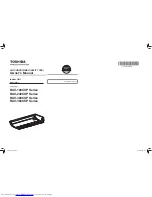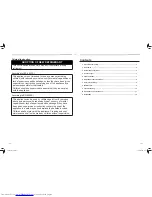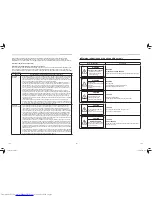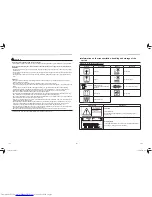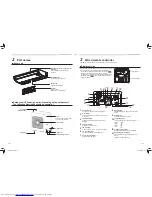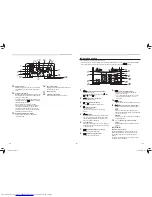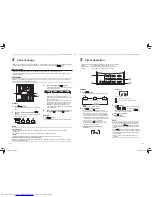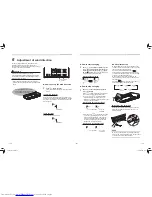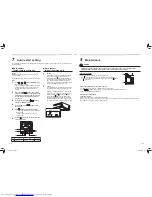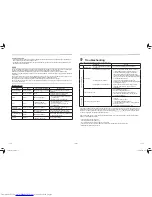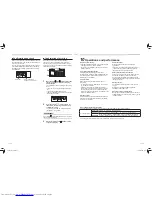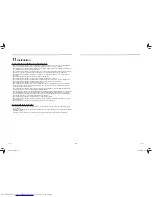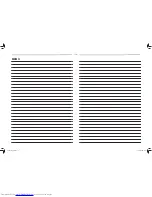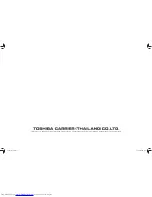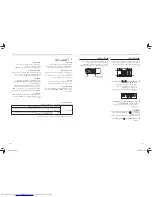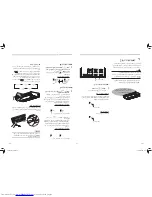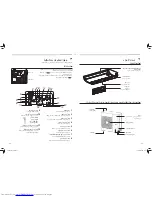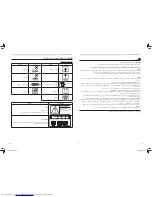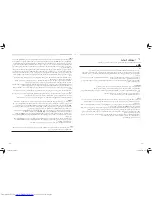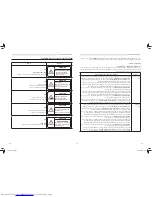
◆
Check periodically
• If the unit is used for a long time, parts may deteriorate and cause malfunction or bad drainage of dehumidi
fi
ed
water depending on the heat, humidity, or dust.
• In addition to the usual maintenance, it is recommended that you have the unit checked and maintained by the
dealer where you purchased it.
NOTE
For environmental conservation, it is strongly recommended that the indoor and outdoor units of the air conditioner
in use be cleaned and maintained regularly to ensure ef
fi
cient operation of the air conditioner.
When the air conditioner is operated for a long time, periodic maintenance (once a year) is recommended.
Furthermore, regularly check the outdoor unit for rust and scratches, and remove them or apply rustproof treatment,
if necessary.
As a general rule, when an indoor unit is operated for 8 hours or more daily, clean the indoor unit and outdoor unit
at least once every 3 months. Ask a professional for this cleaning / maintenance work.
Such maintenance can extend the life of the product though it involves the owner’s expense.
Failure to clean the indoor and outdoor units regularly will result in poor performance, freezing, water leakage, and
even compressor failure.
Maintenance List
Part
Unit
Check (visual / auditory)
Maintenance
Heat exchanger
Indoor / outdoor
Dust / dirt clogging, scratches
Wash the heat exchanger when it is
clogged.
Fan motor
Indoor / outdoor
Sound
Take appropriate measures when
abnormal sound is generated.
Filter
Indoor
Dust / dirt, breakage
• Wash the
fi
lter with water when it is
contaminated.
• Replace it when it is damaged.
Fan
Indoor
• Vibration, balance
• Dust / dirt, appearance
• Replace the fan when vibration or
balance is terrible.
• Brush or wash the fan when it is
contaminated.
Air intake /
discharge grilles
Indoor / outdoor
Dust / dirt, scratches
Fix or replace them when they are
deformed or damaged.
Drain pan
Indoor
Dust / dirt clogging, drain
contamination
Clean the drain pan and check the
downward slope for smooth drainage.
Ornamental panel,
louvers
Indoor
Dust / dirt, scratches
Wash them when they are contaminated
or apply repair coating.
Exterior
Outdoor
• Rust, peeling of insulator
• Peeling / lift of coat
Apply repair coating.
9
Troubleshooting
Check the points described below before requesting repair.
Symptom
Cause
Outdoor unit
• A noise is heard when the power
is turned on.
• The outdoor unit is preparing for running.
It is not a malfunction.
Indoor unit
• Sometimes a swishing is heard.
• When the unit starts running, during operation,
or immediately after the unit stops running, a
sound such as water
fl
owing may be heard, or
the operation sound may become louder for a
couple of minutes immediately after the unit starts
running. This is the sound of the refrigerant
fl
owing
or the dehumidi
fi
er draining.
• A clacking sound is heard.
• This is a sound generated when the heat
exchanger, etc. expands and contracts slightly due
to temperature change.
• Discharged air smells unusual.
• Various smells from the walls, carpet, clothes,
cigarette, cosmetics, etc. adhere to the air
conditioner.
The unit does not run.
• Has a blackout occurred?
• Has the circuit breaker blown?
• Has the protective device been activated?
(The operation indicator and on the remote
controller are blinking.)
Check again.
The room does not cool down.
• Is the air intake or discharge of the outdoor unit
clogged?
• Is a door or window open?
• Is the air
fi
lter clogged with dust?
• Is the air volume set to “Low”? or is the operation
mode set to “Fan”?
• Is the setup temperature appropriate?
If you
fi
nd something unusual even after checking the above, stop running the unit, turn off the circuit breaker, and
inform the dealer where you purchased the product of the product number and symptom. Do not attempt to repair
the unit by yourself as doing so is dangerous. If the check indicator (
,
,
etc.) is displayed on the remote
controller LCD, inform the dealer of its content as well.
If any of the following occur, stop running the unit immediately, turn off the circuit breaker, and contact the dealer
where you purchased the product.
• The switch does not work properly.
• The circuit breaker often blows out.
• You unintentionally put a foreign object or water inside.
• The unit cannot be run even after the cause of the protective device activation is removed.
• Other unusual conditions are found.
– 10 –
19-EN
20-EN
1115653808_EN.indd 10
1115653808_EN.indd 10
10/11/2559 BE 16:21
10/11/2559 BE 16:21

